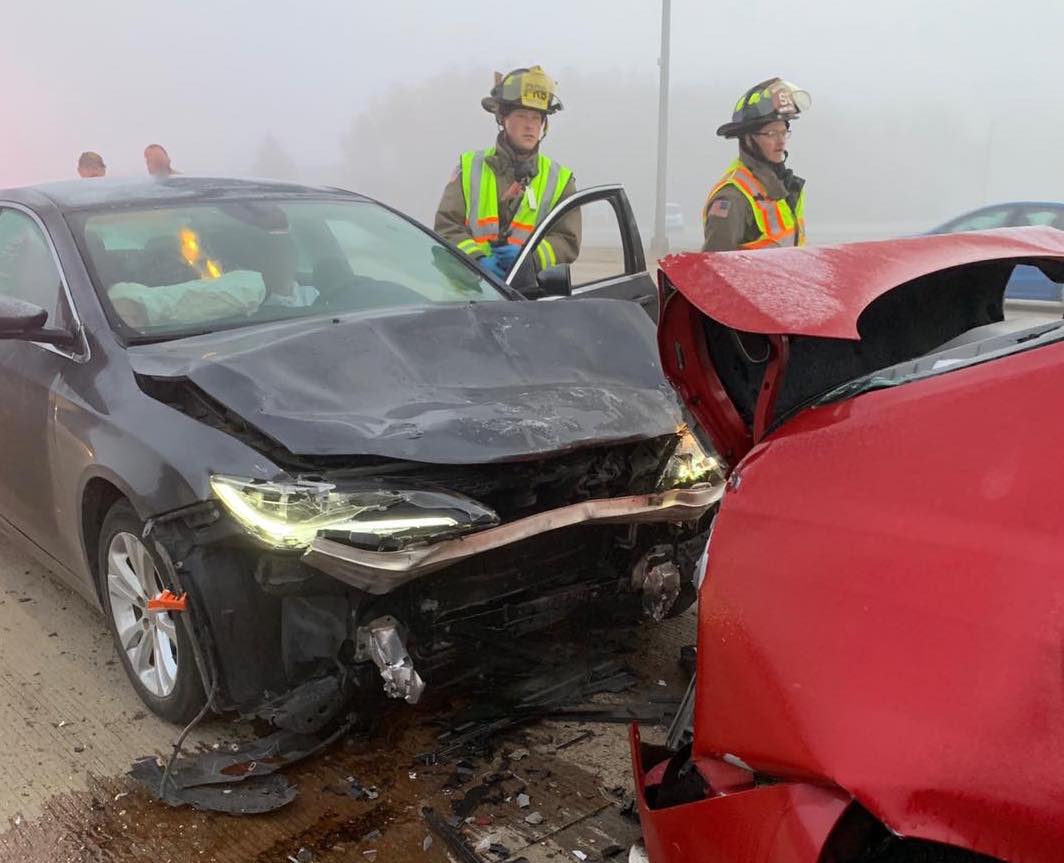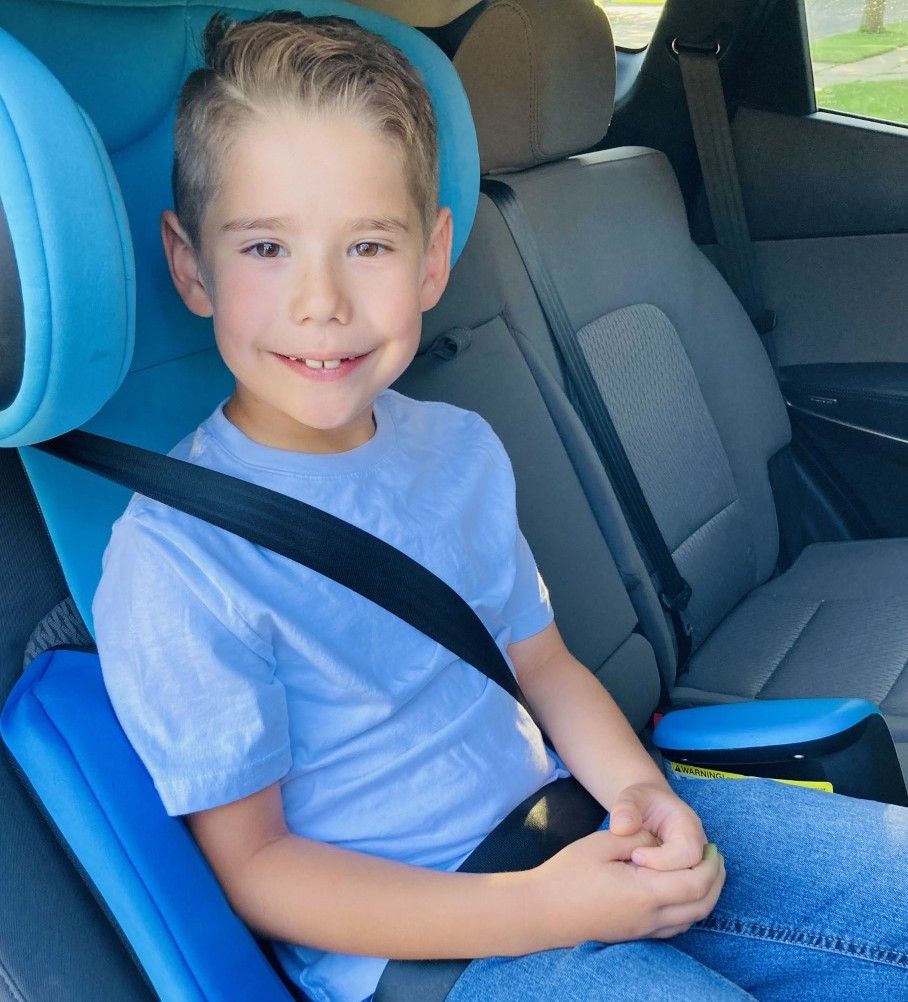South Dakota lawmaker Doug Barthel, a former police chief in Sioux Falls, tried to make state roadways safer from distracted drivers by spearheading passage of a law in 2020 to restrict cell phone use behind the wheel.
The South Dakota law allows cell phone use in a vehicle, but only for phone calls or to look up a phone number, and allows drivers to hold the phone to their ear. The law made it illegal to use a phone for texting, taking photos, watching videos or accessing the internet except in an emergency, and made the infraction a primary offense for which officers can pull over and ticket a driver.
Barthel hopes the law has prevented distracted driving in some cases, but he acknowledges that drivers in South Dakota and across the country continue to engage in risky behaviors behind the wheel that lead to thousands of deaths and injuries each year.
“I just hope there’s some people who got the message and it’s having an impact on them, but to be honest, the majority of people probably ignore the law and still use their phone in the car how and when they want to,” said Barthel, R-Sioux Falls.

In South Dakota, 250 people were killed or injured in car accidents attributed to distracted driving in 2021, according to the state Department of Public Safety, though experts acknowledge the number is probably much higher due to difficulty in proving distracted driving after a crash has taken place.
Distracted driving was listed as a contributing cause of crashes in South Dakota in 2020 at a higher rate than speeding, disregarding a traffic signal, improper passing, over-correcting, and swerving to avoid an object, according to state data. Among teen drivers, 58% of those involved in a crash were distracted at the time of the crash, the state DPS said.
Distracted driving, which includes cell phone use but also eating, talking with others or adjusting vehicle controls, remains a highly risky behavior. Across the U.S., fatal crashes involving a distracted driver rose by 12% from 2019 to 2020, the last year for which data is available. Among all highway deaths that year, distracted drivers were known to be involved in 8% of fatal wrecks (3,143 people killed) and in 14% of injury accidents (324,600 people injured). About 600 pedestrians were also killed by distracted drivers that year, according to the National Highway Traffic Safety Administration.
Talking on the phone while driving can be distracting, but texting while driving is significantly more dangerous and makes a crash 23 times more likely, experts say. With the time needed to read or send a text estimated at five seconds, a driver at 55 mph would be distracted for 405 feet of vehicle travel, more than a football field. At 80 mph, the interstate speed limit in much of South Dakota, the texting driver would be distracted for 585 feet, nearly the length of two football fields.
South Dakota Highway Patrol officers have increased enforcement of distracted diving laws in recent years, according to state data.
From 2015 through 2022, state troopers have issued a total of 1,218 citations or warnings to drivers for distracted driving infractions (527 citations and 691 warnings.) Yet the data show that citations and warnings have climbed in the past two years compared to the six years prior, with 46% of the warnings and citations coming in just the past two years.

Enforcement of distracted driving a challenge
For law enforcement officials, one of the challenges is trying to find a balance between educating the public about the dangers of distracted driving and cracking down with tickets and fines to create a deterrent.
The Watertown Police Department has used targeted social media campaigns to let people know that officers will be out looking for distracted drivers on certain dates and times, much like sobriety checkpoints. During a recent campaign, they focused on issuing warnings the first week and then started writing tickets the following week. The fine is $122.50.
“Word spreads fast, and it’s a bit of a deterrent,” said Capt. Steve Rehorst, a 20-year veteran of the Watertown department. “If we can change people’s behavior for one day or one weekend, maybe that change carries over beyond that point.”
Rehorst noted that student drivers are of particular concern, according to research by the NHTSA, which found in 2019 that 39% of high school students who drove in the previous 30 days texted or emailed while driving on at least one of those days.
“Statistically they spend more time on their phone, and it might be something they’re tempted to do while driving,” said Rehorst, adding that “Don’t Text and Drive” roadway signs are posted near Watertown’s high schools and Lake Area Community College.

The challenge for patrol officers is that catching a driver in the act of texting or checking social media on a phone is difficult.
“When you’re in a black-and-white patrol car that’s clearly marked, they’ll put their phone down because they can see you coming,” said Derek Mann, a former South Dakota Highway Patrol officer who now works as a crash investigator for the Rapid City Police Department. “When I was a motorcycle trooper, though, I could pull alongside people and look right in there and they’d be looking at their phone and then put it in the center console when they saw I was looking.”
Mann mentioned cell phone use when driving on the interstate as a particular concern because of the high rate of speed. “Crash investigation data has shown that it takes 1.6 seconds for your brain to sense something and the message to go to your foot to start braking,” he said. “So let’s say you’re moving 100 feet per second on the interstate, that translates to nearly 200 feet before you even start to brake. If you’re looking down at your phone at a text message or Facebook, it becomes a major problem. Driving needs to be a full-time situation.”
Mann anticipates that South Dakota will at some point move toward banning hand-held devices for all drivers anytime they are behind the wheel, as 24 other states have done, according to the National Conference of State Legislators (Minnesota is the only neighboring state with a hands-free cell phone law).
He also pointed to cell phone blocking apps that prevent drivers from making or accepting calls, texting, or accessing the internet while behind the wheel.
“That’s probably the next step in the evolution of cell phones and enforcement,” Mann said.
Barthel said cell phones have become so ubiquitous that it may be impossible to stop people from using them while driving.
“They believe they have good reaction time, and they’ve never had an issue,” he said, “but they’re just playing with fire if they’ve got their head down looking at their phone while driving. Heaven forbid, they will drift into your lane and hit you head on.”
Barthel said he has seen no data that shows if the 2020 law has had an impact on driver behavior or safety. But he’s hopeful he made a small difference in roadway safety and in protecting lives and property.
“The goal was not to write a pile of tickets, because it’s easier said than done to show what somebody was doing on their phone when you pull them over,” Barthel said. “But if people know something is against the law, they’re more inclined to be more aware of it and to not openly break the law.”
Barthel said he was long aware of the dangers of distracted driving, but became fully engaged in pushing the phone law after hearing from the father of Jacob William Dahl, a 19-year-old man from Castlewood who died in 2014 after crashing into the back of a stopped truck. Dahl was looking at his phone and had his cruise control set while driving. He apparently never looked up or braked before striking the truck. The impact killed him instantly.
Barthel did not run for re-election and is leaving the Legislature, and he’s unsure if any other lawmaker will try to bring forward a bill that he believes could have the greatest safety impact — a stricter distracted-driving law that would allow only hands-free use of phones.
Barthel said that in a rural state with wide-open spaces, the public and other lawmakers are unlikely to support stricter cell phone rules for motorists at this time.
“Everybody has a cell phone anymore and they’ve become a big part of our lives, so to ask people to totally give that up while in a car is easier said than done,” Barthel said. “Given what it took to get this law passed, I’m not sure the state is ready for a ban on cell phones in the car or even a hands-free law.”

Public information efforts continue
In addition to enforcement by local police and the state Highway Patrol, several efforts are underway in South Dakota to alert residents to the dangers of distracted driving and hopefully to change their behaviors.
The Safety Village of South Dakota recently received a small grant from State Farm insurance to develop a program in schools to educate young drivers on overall safety but also to stop distracted driving.
The Office of Highway Safety within the state DPS recently commissioned a sculpture now on display in the Empire Mall in Sioux Falls that depicts a large globe consisting of 250 cell phones, each tucked within a coffin. The sculpture, which will later be placed in public places across the state, is meant to provide a warning about the dangers of distracted driving by highlighting the 250 people injured or killed in distracted driving crashes in 2021, according to the department.
“Distracted driving is a problem not only in South Dakota, but throughout the nation,” said Office of Highway Safety Director Amanda Kurth in a news release. “While this sculpture focuses on the danger of being distracted by cell phones, there are other distractions, such as talking to a passenger or changing the dial on the radio, that can cause you to lose focus and result in a serious crash.”

The group South Dakota EMS for Children also received federal grant money recently to embark on a campaign called “Buckle Up/Phone Down” to warn Sioux Falls drivers of the risks of distracted driving and not wearing a seat belt, said Emily Pogue, program coordinator for the group.
The group that supports safe treatment and care of children has created a web page and plans to develop an app that reminds people to be safe behind the wheel. During the six-month program, the group is asking people to take a pledge to remain safe while driving, and is also soliciting personal stories of people who have been affected by distracted driving or lack of seat belt use. It plans to feature the articles or videos on the website to personalize the potentially devastating effects of risky driving behaviors.
“We know that picking up your phone while driving has now become habitual, so when the phone dings, you answer your email or answer that text,” Pogue said. “It’s going to take a multi-faceted approach to effect change … because unless it happens to you, sometimes it takes a long time to get this through your brain, especially with young people who have that feeling of invincibility.”
On its website, the group published data points that show South Dakota is behind the rest of the nation in terms of seat belt use and enforcement. In 2020, according to NHSTA, the overall U.S. seat belt use rate was 90.3%, while it was only 68.3% in South Dakota. In South Dakota, seat belt use is required, but failure to wear a seat belt remains a secondary traffic offense, meaning officers cannot pull over a driver solely for that infraction.
The EMS group also notes on its website that more than one in 10 fatal accidents in Lincoln and Minnehaha counties is related to distracted driving.
Pogue said she has lost four people in her life to accidents where seat belts weren’t in use. Her support of safe driving habits has rubbed off on her 8-year-old son, Keaton, who sometimes reminds her to wear her seat belt or to signal before turning if she gets complacent.
“In Sioux Falls, we’re all about neighbor helping neighbor, so it’s important to remember this isn’t just about safety for drivers, but also for passengers and pedestrians,” she said.
— News Watch reporter Stu Whitney contributed to this report.




